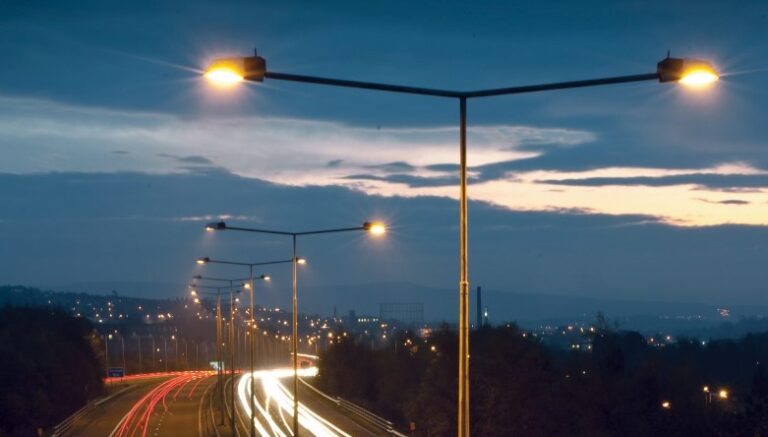Have you ever wandered through your neighborhood at night, marveling at how the streetlights seem to know exactly when to turn on and off? It’s like they have a mind of their own, guiding you safely through the darkness. But have you ever wondered how these streetlights are controlled? Let’s dive into the fascinating world of Street Light Control and shed some light on this essential aspect of urban infrastructure.
What is Street Light Control?
Street Light Control is the management of outdoor lighting systems to regulate when and how intensely streetlights illuminate public spaces. It involves mechanisms that automatically adjust lighting levels based on factors like time of day, ambient light, and pedestrian or vehicular activity.
How Does Street Light Control Work?
Imagine a network of streetlights as a symphony orchestra, with each light as a musician playing its part. Street light control acts as the conductor, directing each light precisely when to shine and when to dim.
Modern systems utilize sensors, timers, and even advanced algorithms to orchestrate this performance. For instance, sensors can detect movement, allowing lights to brighten as pedestrians or vehicles approach and dim when the area is vacant.
Benefits of Street Light Control
Enhanced Safety: By ensuring well-lit streets, controlled lighting contributes to pedestrian and vehicular safety, reducing the risk of accidents and criminal activity.
Energy Efficiency: Smart control systems optimize energy usage by dimming or turning off lights when they’re not needed, leading to significant cost savings and environmental benefits.
Reduced Light Pollution: By minimizing unnecessary light emissions, street light control helps preserve the natural darkness of the night sky, benefiting both stargazers and nocturnal wildlife.
Types of Street Light Control Systems
Timer-Based Systems: These systems operate on preset schedules, turning lights on and off at specific times regardless of external conditions.
Photocell Sensors: Also known as dusk-to-dawn sensors, these devices activate lights at dusk and deactivate them at dawn, responding to changes in natural light levels.
Motion Sensors: These sensors detect movement within their range and activate lights accordingly, making them ideal for areas with fluctuating activity levels.
Smart Street Light Control
Enter the era of smart cities, where technology seamlessly integrates into urban life. Smart street light control systems leverage IoT (Internet of Things) technology to enable real-time monitoring and management of lighting infrastructure.
These systems collect data on light usage, energy consumption, and environmental conditions, allowing for dynamic adjustments to optimize performance and efficiency.
Challenges and Solutions in Street Light Control
Maintenance: Aging infrastructure and faulty components can pose challenges to effective street light control. Regular maintenance and proactive monitoring are essential to address these issues.
Integration: Integrating new control systems with existing infrastructure can be complex. However, modular solutions and interoperable technologies facilitate seamless integration and scalability.
Future of Street Light Control
As technology advances, so does the potential for innovation in street light control. From AI-powered predictive analytics to renewable energy integration, the future holds exciting possibilities for enhancing the efficiency and sustainability of outdoor lighting systems.
Environmental Impact
Street light control not only conserves energy but also reduces carbon emissions associated with electricity generation. By embracing energy-efficient technologies and renewable energy sources, cities can mitigate their environmental footprint and contribute to a greener future.
Cost Considerations
While the initial investment in street light control systems may seem daunting, the long-term savings in energy and maintenance costs often outweigh the upfront expenses. Additionally, many governments offer incentives and financing options to support the adoption of energy-efficient technologies.
Community Engagement
Engaging the community in street light control initiatives fosters a sense of ownership and responsibility. Public outreach programs and feedback mechanisms empower residents to contribute to the design and implementation of lighting strategies that meet their needs and preferences.
Windows 11 Pro License Key Price in BD
Windows 11 Pro is a high-performance operating system designed for professionals, offering advanced features like enhanced security, remote desktop access, and improved productivity tools. In Bangladesh, the price of a genuine Windows 11 Pro License Key Price in BD generally ranges from BDT 8,000 to BDT 15,000, depending on the retailer, package deals, and occasional discounts. Buying a legitimate license ensures you receive official updates, full functionality, and customer support from Microsoft. Whether upgrading from an older version or installing it on a new device, investing in a licensed Windows 11 Pro key guarantees a secure and smooth computing experience.
Conclusion
In the grand symphony of urban life, street light control plays a vital role as the conductor, orchestrating the dance of light and darkness that guides us through the night. From simple timer-based systems to cutting-edge smart technologies, the evolution of street light control reflects our ongoing quest for safety, efficiency, and sustainability.
As we look towards the future, the possibilities are endless. With advancements in technology and a growing emphasis on environmental stewardship, street light control will continue to evolve, illuminating our communities while minimizing energy consumption and light pollution.
So, the next time you stroll down a well-lit street on a moonlit evening, take a moment to appreciate the marvel of street light control, silently working behind the scenes to keep our cities safe and vibrant.

